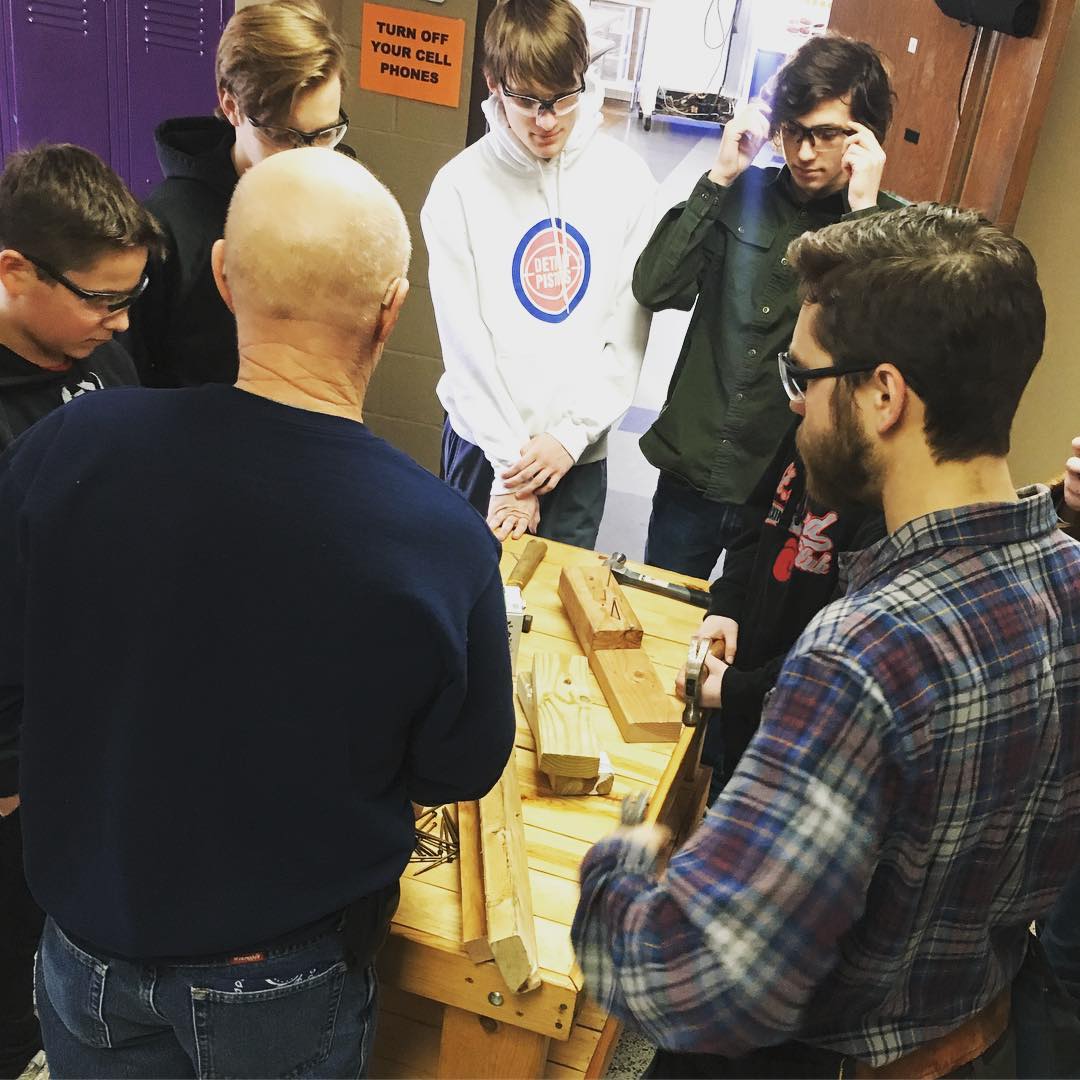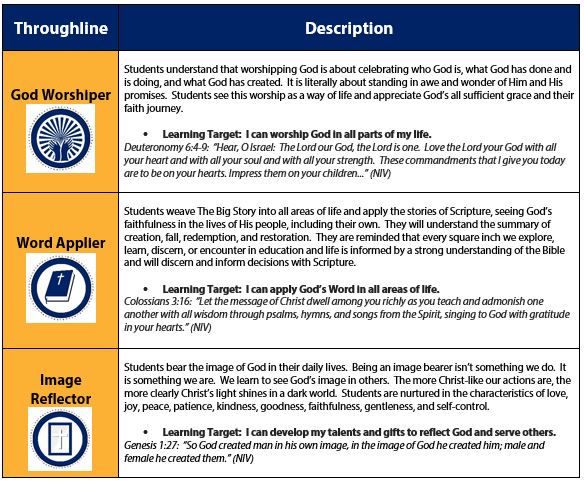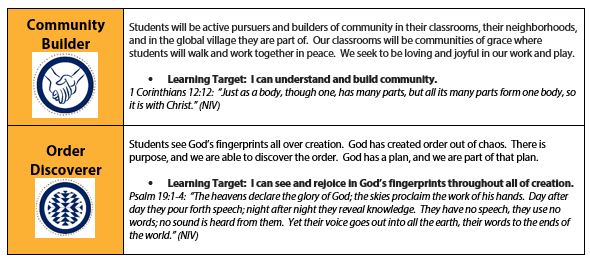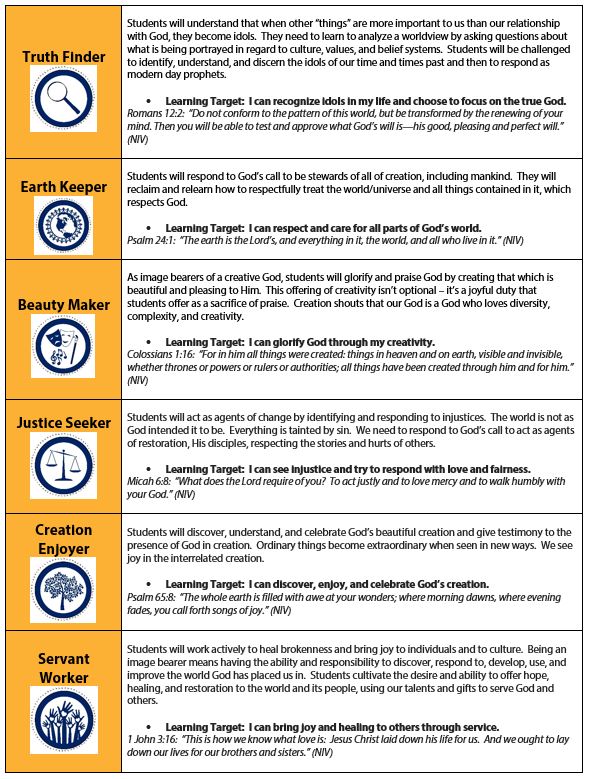“The primary goal of Christian education is the formation of a peculiar people, a people who desire the kingdom of God and thus undertake their life’s expression of that desire.”
James K. A. Smith
What makes St. Cloud Christian School distinctive? We believe we’re Teaching for Transformation!
God is sovereign and Jesus Christ is Lord over all things! That is the biblical truth that must gently whisper and boldly resound in every part, every thread of a Christian school’s curriculum. It must serve as the core curriculum in every Christian school classroom. The task of a Christian school teacher is to expose God’s fingerprints in ALL things.
Throughout its history, SCCS has been focused on integrating faith and learning in everything we do. In 2020, we started on a journey to further develop that strength—the implementation of the Teaching for Transformation (TfT) curriculum planning model.
Teaching for Transformation binds together all subjects and activities, providing a framework for the education we provide and what we want graduates to be.
It helps us live out our mission by providing definitions of:
- what it means to be a disciple (head),
- why we have discipleship habits (heart), and
- how we practice being a disciple (hands).
It is our goal that our students will see God’s fingerprints in everything that is taught, understand God’s Story of redemption, and see their role in His redemptive story.
God created all things. Even after the fall, which indeed affects and infects all things, creation remains good. Redemption impacts all things, redirecting them to their God-designated purposes. Someday, all things will be fully restored, but the work of renewal begins now, and we are privileged to be co-workers with God in this process.
It is into this story that teachers are called to invite each student. Through TfT, teachers design learning experiences that help students discover God’s Story and His fingerprints in all things, with the hope that every learning experience will become truly transformational for every student.



Core Practice #1: Storyline
Every Christian school classroom must have a powerful and compelling vision of the Kingdom that creates a longing and a desire within every student to play their part in God’s unfolding Story of creation-fall-redemption-restoration.
“And once you live a good story, you get a taste for that kind of meaning in life, and you can’t go back to being normal; you can’t go back to meaningless scenes stitched together by the forgettable thread of wasted time. The more practiced stories I lived, the more I wanted an epic to climb inside of and see through to its end.”
Donald Miller
Every unit and every learning experience tells a story. The TfT framework tries, using the story discovered in each unit of study, to create a powerful and compelling image of God’s Story. The TfT framework invites students to imagine his or her place in God’s Story – now. TfT does this by connecting the story of each unit with opportunities to tangibly practice living in the grand narrative. Each student and teacher will begin to create a personal “storyline” and articulate how they see themselves living in God’s epic drama.
SCCS School Storyline: Living God’s Story
|
Concept
|
Description
|
|
Creation
|
The biblical Story tells us that God created and sustains all things. God gave life and controls all things. He made mankind to have special relationships with Him and gave mankind His creation mandate that directs human life. The creation is good, which refers to the physical and biological creation and also the cultural strands that God has woven into its fabric. Here the focus is on what God intended things to be like, the way it ought to have been. |
|
Fall
|
The biblical Story tells us that all things have fallen as a result of sin and that every facet and part of the world is twisted by evil. The consequence is pain and suffering, brokenness and idolatry. Therefore, all things, human life and culture, have become distorted and shaped by idolatry. The widespread effects of sin are obvious, but God is still faithful and promises liberation from this bondage. |
|
Redemption
|
The biblical Story tells us that although man fell into sin, God had a plan of redemption through the sacrifice of His Son. Christ came to earth to restore creation from the distorting influence of sin and to redeem all things so that we could get back on track with God’s original design and purpose. Through the redemptive work of Jesus Christ, who holds all things together, the power of sin has been dealt with. Now, as redeemed people, we look forward towards and participate in the restoration of the whole creation. |
|
Restoration
|
The biblical Story tells us that we are called to live in the light of this coming restoration as faithful redemptive agents responding to God’s invitation to work towards ongoing redemption, as we fulfill our original mandate to take care of and develop His creation. God is sovereign in His ongoing work of redemption, and He calls us to join Him as His redemptive people, His agents of restoration. In response to Christ’s past and ongoing redemptive work, and with the active presence of the Holy Spirit, we can gratefully respond by living a life of service and partnership as all things move towards complete restoration. This will not be fully realized until Christ returns. One of the tasks of the Christian school is to call students to be involved in God’s redemption and transformation of His world and to set up sign posts to the coming Kingdom. |



